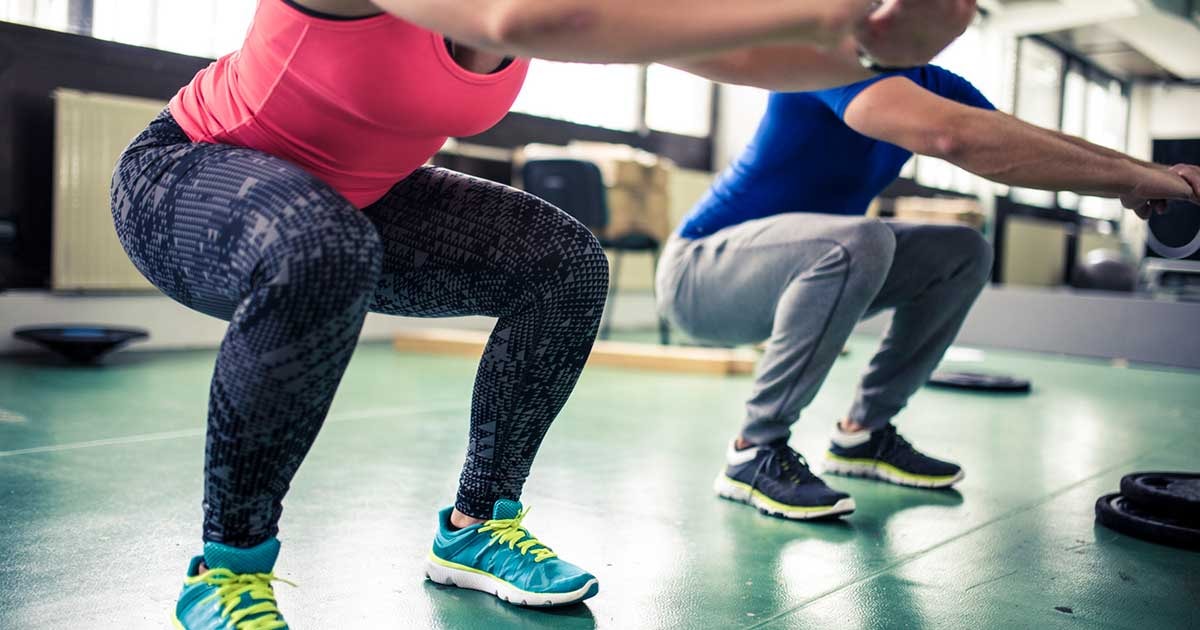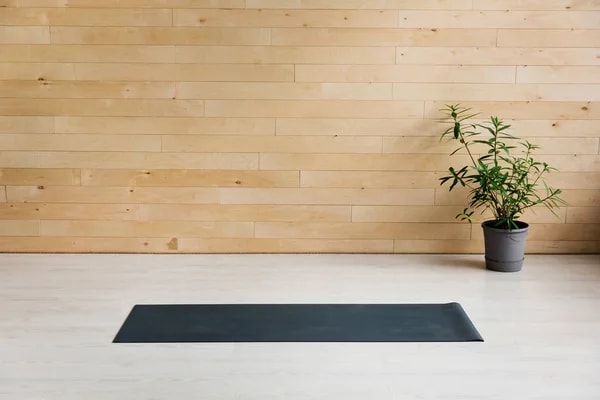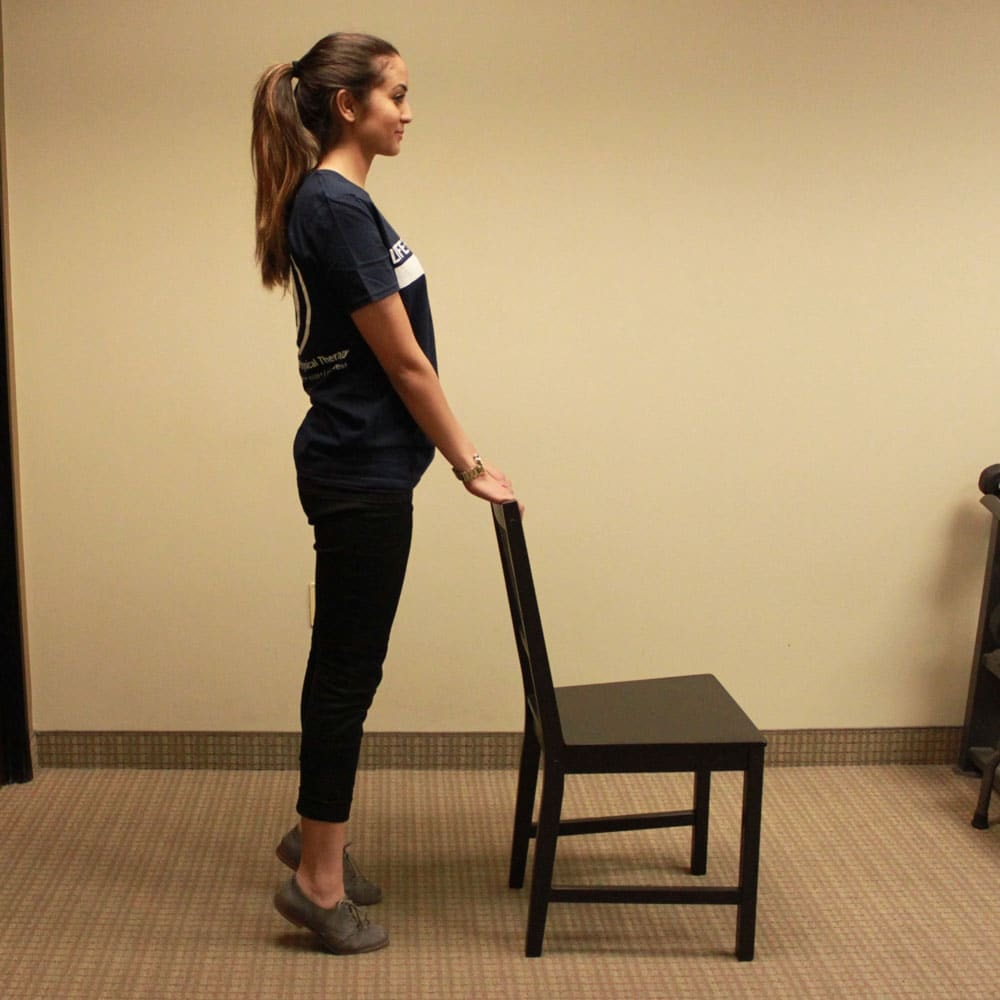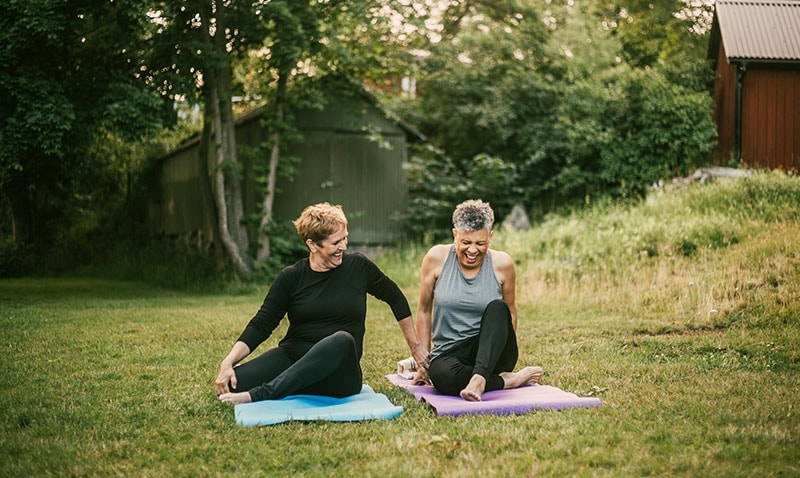Keeping our joints healthy and strong is something I’ve learned to prioritize over the years, especially as we age. For older people, it’s essential to strengthen and support joint health to maintain mobility and reduce discomfort. Joints are at the heart of every movement, but they often take a beating—from daily wear and tear, injuries, or simply aging. You can ease stiffness, build strength, and keep everything moving smoothly with the right exercises. It’s not about pushing yourself too hard; it’s about giving your joints the support they need to keep up with you as you stay active and independent.
I know how daunting it can feel to start, especially if your joints are already bothering you, but trust me, it’s worth it. I’ve seen how simple stretches and low-impact exercises relieve and prevent future issues. You don’t need to be a fitness guru to do this—just a little consistency goes a long way. Let me walk you through some exercises that have worked for me and others so you can keep your joints happy and stay active without the nagging pain holding you back.
Joint Health Boost: Strengthening and Supporting Your Joints

Did you know that many older people experience joint discomfort as they age? Simple activities like climbing stairs, reaching for items, or getting out of bed can feel much harder when stiff joints get in the way. I’ve seen how frustrating and limiting this can be, but I also know there’s a way to strengthen and support joint health to regain that ease of movement.
The best part? Supporting your joints doesn’t require intense workouts or special equipment. Targeted exercises can improve flexibility, reduce discomfort, and help you stay active and independent. I’ve put together this easy guide to show you how to strengthen your joints safely and effectively. Let’s work together to keep you moving comfortably and confidently every day.
Key Highlights
-
Learn how joints function and the key components, such as cartilage, synovial fluid, ligaments, and tendons, that keep them moving smoothly and pain-free.
-
Regular exercise can enhance flexibility, improve range of motion, and strengthen the joints, preventing discomfort and promoting pain-free movement.
-
Proper warm-up techniques and safe exercise space are crucial to preventing injury and ensuring effective joint exercises.
-
Isometric exercises and gentle range of motion movements help build muscle strength while protecting the joints, improving stability, and boosting mobility.
-
Pay attention to progress signs such as improved flexibility and strength, and recognize warning signs like persistent pain to ensure steady, injury-free progress.
Understanding Your Joint Health Basics
Understanding how your joints work is the first step to keeping them healthy. A joint is where two or more bones come together, and it relies on several important components to function properly. Knowing how these parts work together can really help you take better care of them in the long run.
-
Cartilage: covers bone surfaces to reduce friction.
-
Synovial Membrane: produces lubricating fluid.
-
Ligaments: connect bones and provide support.
-
Tendons: attach muscles to bones.
-
Bursae: fluid-filled sacs that cushion movement.
Joint Problems
Joint problems have a way of creeping up on us, don’t they? It’s the everyday wear and tear usually starts to add up over time. I’ve noticed that conditions like osteoarthritis can appear at any age, and those old injuries we thought were long gone? They can resurface as joint issues later in life. It’s something I’ve come to realize, and it’s a good reminder to start taking care of our joints before they start giving us trouble.
Importance of Exercise
Exercise has been a game-changer in keeping my joints in good shape. From what I’ve learned, staying active helps your body produce synovial fluid like the oil that keeps an engine running smoothly.
This fluid helps your bones glide past each other without friction, which is key to pain-free movement. On top of that, regular exercise has so many proven benefits for your joints, and I’ve noticed the difference. Let me share a few of the benefits I’ve found:
-
Increased bone density.
-
Strengthens joint structure.
-
Improved flexibility.
-
Enhances range of motion.
Look out for Signs
When you’re checking in on your joint health, pay close attention to any warning signs like stiffness, especially in the mornings. It’s common for this to ease up once you get moving and start your day. Also, joint discomfort might occasionally pop up or feel more persistent.
It can show up as a burning, throbbing, or “grating” sensation—something I’ve noticed myself sometimes. If you’re experiencing any of these, it’s definitely worth paying attention to and considering how movement might help.
Essential Pre-Exercise Preparation

First and foremost, proper preparation is essential for older people to safely and effectively perform exercises that strengthen and support joint health. Let’s explore how to set up your exercise space and prepare correctly.
Creating a Safe Exercise Space
Setting up a hazard-free exercise area is crucial for preventing accidents. Your workout space should be clutter-free with non-slip flooring to prevent trips and falls. Moreover, it ensures the area has good ventilation and appropriate temperature control. A well-lit space is equally important, especially if you use exercise equipment or follow workout videos.
Proper Warm-up Techniques
A proper warm-up is vital for joint health and injury prevention. Research shows that warming up helps:
-
Stimulate synovial fluid production for better joint lubrication.
-
Increase blood flow to muscles.
-
Prepare your nervous system for exercise.
-
Reduce risk of injury.
Start with 5-10 minutes of low-impact activity. Consequently, follow these warm-up guidelines:
-
Begin with a brisk walk or light stationary cycling.
-
Perform gentle joint rotations.
-
Include dynamic stretches.
-
Gradually increase intensity.
Avoid the Rut: Cross-Train
Varying your activities instead of sticking to the same routine daily helps prevent overuse injuries and ensures different muscle groups are engaged effectively.
Starting with Foundation Exercises

Now that we’ve covered the basics of preparation let’s dive into some fundamental exercises that I believe are key to joint health, especially for older people. These simple but powerful movements are designed to strengthen and support joint health by building muscle memory and boosting joint stability. They’re the foundation that sets the stage for everything else, helping you move better and feel stronger as you go.
Basic Range of Motion Movements
Range of motion exercises are vital for maintaining flexible, healthy joints. These movements help stretch and strengthen the muscles supporting your joints while improving mobility. A proper routine includes:
-
Gentle stretching of major muscle groups.
-
Controlled joint rotations.
-
Progressive movement patterns.
-
Gradual increase in range.
Start with 5-10 repetitions of each movement. Meanwhile, pay attention to any discomfort – while mild stretching sensation is normal, sharp pain indicates you should stop the exercise.
Isometric Strengthening Exercises
Isometric exercises are all about holding a position without any joint movement. I’ve found these exercises to help protect your joints, especially if you’re trying to avoid unnecessary strain. What’s great about them is that they focus on building muscle strength without putting too much pressure on your joints.
It’s like giving your muscles the support they need while keeping everything stable and safe. Plus, they’re a great way to aid recovery when dealing with joint pain or after an injury. I can’t recommend them enough for anyone looking to stay strong and protect their joints simultaneously.
Proper Form and Breathing Techniques
Maintaining proper form is crucial for exercise effectiveness and safety. Focus on these essential breathing principles:
-
Breathe naturally throughout the exercises.
-
Inhale through your nose.
-
Exhale slowly through pursed lips.
-
Maintain a steady breathing rhythm.
Strengthen And Support Joint Health: Progressive Joint-Strengthening Routine

Now that you’ve mastered the basics let’s explore a comprehensive routine that targets all major joint groups. This progressive approach helps build strength gradually while maintaining joint health.
Lower Body Joint Exercises
Let’s start with basic lower body movements that help with everyday activities. Walking is a great foundation exercise—it’s easy on the joints, requires no fancy equipment, and gets your body moving. If you’re looking to get the most out of these exercises, aim for 2-3 times a week, and here’s a simple routine you can follow:
|
Exercise |
Sets x Reps |
Key Benefits |
|---|---|---|
|
Standing Heel Raises |
2 x 15-20 |
Helps with ankle mobility and balance |
|
Standing Hip Extension |
2 x 15 |
Strengthens hip stability |
|
Side Leg Raises |
2 x 15 |
Builds hip strength |
|
Squats |
2 x 12-15 |
Strengthens your entire leg |
These exercises are about keeping your lower body strong, stable, and ready to tackle whatever your day brings!
Upper Body Joint Exercises
Upper body strength is vital for maintaining independence and preventing injury. Indeed, these exercises focus on strengthening arms, shoulders, and chest muscles:
-
Biceps Curls with Resistance Band: Strengthens arm muscles
-
Reverse Fly: Improves upper back and shoulder stability
-
Row Exercise: Enhances posture and chest strength
-
Shadow Boxing: Develops shoulder mobility
Each exercise should be performed with controlled movements, focusing on proper form over speed.
Core Stabilization Exercises
Building a strong core is one of the best things you can do for your spine and hip joints. I can’t stress enough how important it is to get these fundamental movements right so your body stays supported. Here’s how I like to start:
-
Pelvic Tilt: Start by lying on your back with your knees bent. Gently tilt your pelvis upward, holding the position for about 5 seconds. Repeat for two sets of 10-15 reps. Simple, but effective!
-
Bridge Exercise: Raise your hips until your body forms a straight line from your shoulders to your knees. Hold that position for 8-10 seconds, and then lower down. Again, aim for two sets of 10-15 reps. It’s a great way to feel that core working!
One key thing I’ve learned is to only add resistance or weight when these exercises start to feel easy. Gradually increasing the challenge lets your muscles grow stronger without overloading your joints. Listen to your body, and dial it back a bit if something starts to feel too intense or painful. Adjusting as you go helps keep you on the right track.
Monitoring Progress and Preventing Injury

Successful joint strengthening requires careful attention to how your body responds to exercise, especially for older people. Understanding the difference between progress indicators and warning signs is crucial to strengthen and support joint health while preventing injury and maintaining steady improvement.
Signs of Progress vs. Warning Signs
As you work on strengthening your joints and improving your overall fitness, paying attention to the signs your body is giving you is super important. Tracking progress keeps you motivated and helps you stay on track and spot any potential issues before they become problems. Here’s what I recommend keeping an eye on during your journey:
You’ll know you’re progressing when you notice improved daily movement, better flexibility, and increased strength. These are all signs that your body is adapting and getting stronger. Better balance and improved sleep quality show you’re on the right path.
On the flip side, if you’re experiencing pain that lasts more than two hours after exercise or sharp joint pain during activity, it might be time to take a step back and reassess. Swelling or redness in your joints and extreme fatigue are also things to watch for. If you start noticing limited joint movement or any warning signs, listening to your body and giving it the rest it needs is important.
When to Modify Exercises
Exercise modifications become necessary under specific circumstances. Stop or adjust your routine if you experience:
-
Pain that persists more than an hour after exercise.
-
Difficulty performing daily activities.
-
Joint swelling or inflammation.
-
Decreased range of motion.
-
Performance decline.
Besides reducing intensity, consider alternative exercises. For instance, water exercises or swimming can strengthen joints with minimal impact. Otherwise, isometric exercises that produce muscle contraction without joint motion offer another effective option.
Recovery and Rest Guidelines
Rest is such an important part of keeping our joints healthy, and trust me, it makes a huge difference in your recovery process. I’ve learned that muscles need that time to recover and rebuild, so don’t skip it! It’s not just about working hard—it’s about giving your body the chance to heal and return stronger. Based on research and my own experience, here’s what I’ve found helps during the recovery phase:
First off, it’s crucial to give yourself enough rest. Try to space out workouts targeting the same muscle groups by 1-2 days. If your joints feel swollen or sore, take an extra rest day to heal them properly. I’ve also found that 2 to 3 strength training sessions a week is the sweet spot for most people.
Regarding recovery techniques, I swear by a few simple steps: applying ice for about 20 minutes after your activity can help if needed, compression works wonders for swelling, and don’t forget to elevate your affected limbs above your heart to reduce inflammation. These little things can help speed up the process and keep you feeling your best.
Here’s an additional video about warm up exercises
By: yes2next
Building Stronger Joints: The Key to Lasting Mobility and Well-Being
Strong, healthy joints make daily activities easier and more enjoyable. Through consistent practice of joint-strengthening exercises, anyone can build resilience and maintain mobility, regardless of their starting point.
Remember these key principles for success: start with proper preparation, master basic movements before advancing, and listen carefully to your body’s signals. Most importantly, progress happens gradually – small, consistent efforts lead to significant improvements over time.
Your journey toward stronger joints requires patience and dedication. Though you might experience initial discomfort, following proper form and respecting recovery periods will help prevent injuries while building strength. Regular exercise and careful progress monitoring create a sustainable path toward better joint health and enhanced quality of life.
FAQS
What Are the Best Exercises to Strengthen Joints?
Low-impact exercises such as range of motion movements, isometric exercises, and gentle strength training are ideal for strengthening joints. Activities like walking, squats, and resistance band exercises can enhance joint stability and flexibility without putting too much strain on the body.
How Can I Prevent Joint Pain While Exercising?
To prevent joint pain, it’s important to warm up properly before exercising, maintain proper form, and avoid overexertion. Gradually increase the intensity of your workouts and incorporate rest days to allow your joints and muscles to recover. Isometric exercises are especially helpful for reducing strain while still building strength.
How Often Should I Do Joint-strengthening Exercises?
Aim to incorporate joint-strengthening exercises into your routine 2-3 times weekly. Consistency is key, but listening to your body is equally important. If you experience discomfort, rest days to allow your joints to recover before resuming exercises.
Transform Your Fitness Journey After 55!
Welcome to Fit After 55, where we help you lead a dynamic and active lifestyle. Whether you’re a beginner or an experienced fitness lover, we offer useful tips for setting realistic goals and monitoring your progress. Start your transformation today by visiting our website and joining our community on Facebook!

